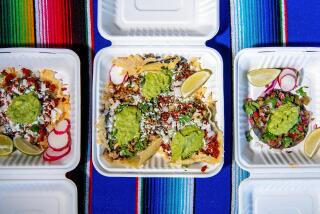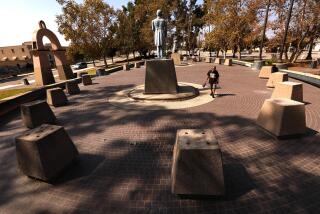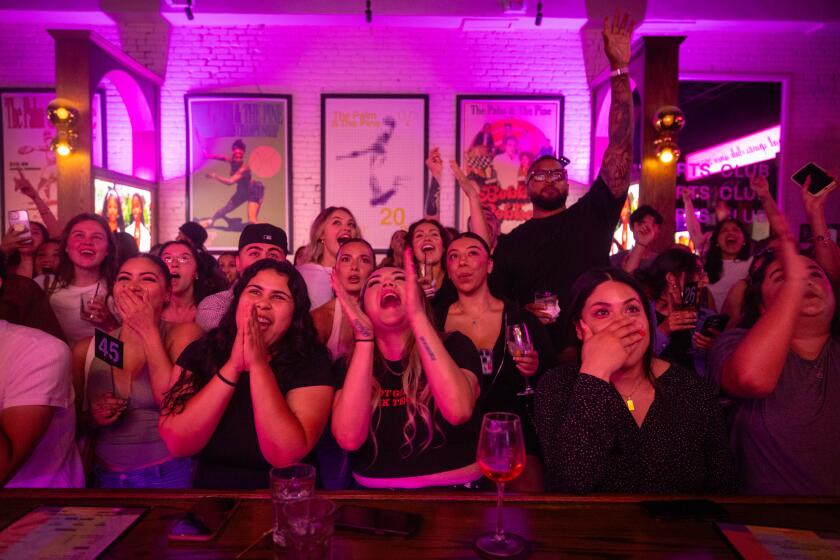Signs of Pancho Villa
- Share via
Say what you want about Pancho Villa, the man could accessorize. Like Napoleon with his hat or FDR with his jaunty, upturned cigarette holder, the Mexican Robin Hood boasted a permanent prop: his horse. Pancho Villa is so regularly pictured on horseback that he’s called “The Centaur of the North” (he came from Chihuahua, in northern Mexico). A centaur with attitude.
In March 1916, Villa seized the border town of Columbus, N.M., killing 17 Americans and provoking a “punitive expedition” by 6,000 to 10,000 American troops (figures vary), who never found him. Now, still on horseback, Villa has been showing up in L.A.--painted on walls.
The northwest corner of Pico Boulevard and Western Avenue has become a Villa shrine of sorts. Prolific sign artist Rafael Escamilla painted an ambitious and colorful commercial mural over the main entrance to a productos latinos grocery store. A dynamic Villa is caught leading his horsemen through a vivid desert landscape, which happens to include a fecund stream, rich with happy fish that leap into the air, heralding the liberator’s arrival. A few hundred feet south on Western, Villa appears on another sign above a small restaurant, this time without jumping fish. Farther east, in Boyle Heights, a Pancho Villa outside a bar and signed by Manuel Cruz bears the rough immediacy of graffiti. Only in this version, even the horse looks mad.
More to Read
Sign up for The Wild
We’ll help you find the best places to hike, bike and run, as well as the perfect silent spots for meditation and yoga.
You may occasionally receive promotional content from the Los Angeles Times.






